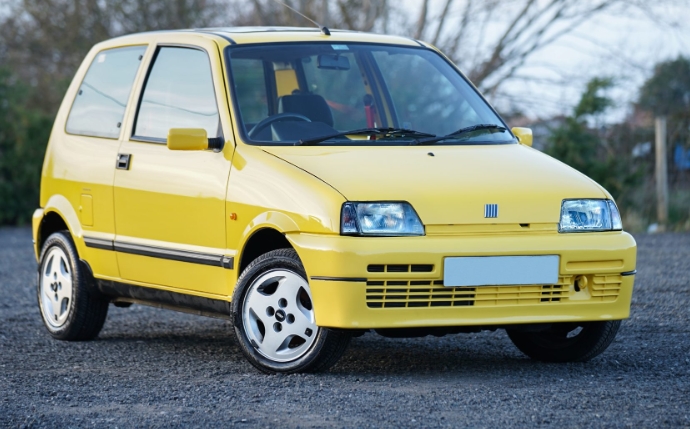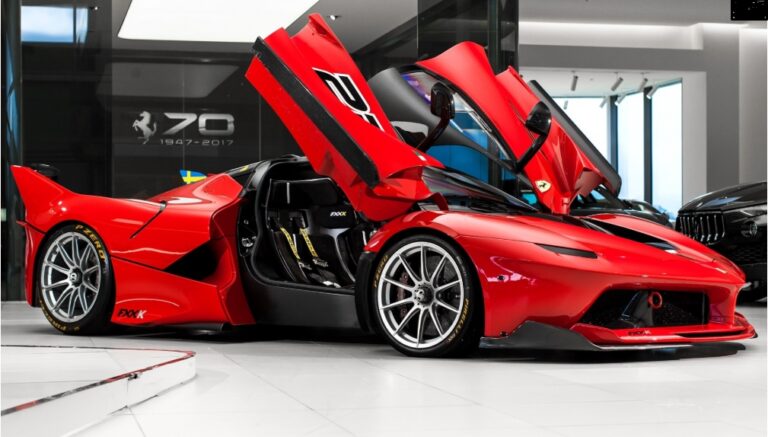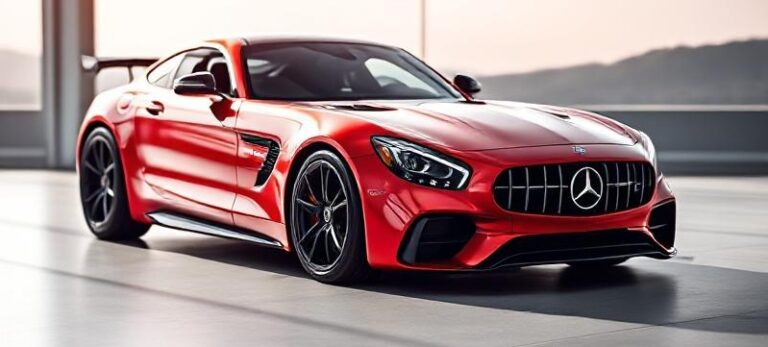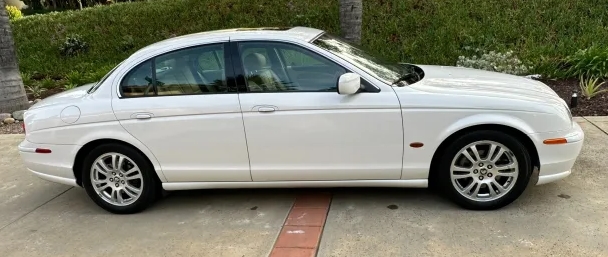The Little Giant: The Enduring Evolution of the Fiat Cinquecento
In the pantheon of automotive legends, few cars occupy a space as large in the heart as the one that takes up the least amount of space on the road. The Fiat Cinquecento, Italian for “500,” is more than a mere vehicle; it is a cultural touchstone, a symbol of national rebirth, and a masterclass in minimalist design. Its story is not of a single, continuous model, but of three distinct incarnations, each perfectly capturing the spirit of its era. From the post-war miracle of the Nuova 500 to the pragmatic functionality of the 90s Cinquecento and the retro-chic revival of the modern 500, its evolution is a fascinating journey through social and automotive history.
The Precursor: Setting the Stage with the “Topolino” (1936-1955)
While the story of the iconic Cinquecento truly begins in 1957, it’s impossible to ignore its spiritual ancestor, the Fiat 500 “Topolino.” Launched in 1936, its nickname, meaning “little mouse,” perfectly described its diminutive stature and endearing character. Designed by the legendary Dante Giacosa, the Topolino was a bold attempt to provide affordable mobility to the Italian masses. With its 569cc four-cylinder engine anachronistically placed ahead of the front axle, it was technically innovative for its time. It successfully motorized a segment of Italy before the war, but by the 1950s, a new vision was needed for a nation rebuilding itself with optimism and vigour. The Topolino laid the groundwork, proving that a small car could have a big impact.
The Icon Reborn: The Fiat Nuova 500 (1957-1975)
The Italy of the mid-1950s was a country in the throes of its “economic miracle” (il miracolo economico). A burgeoning middle class yearned for personal transport, something more substantial than a Vespa but more accessible than a full-sized sedan. Once again, Fiat turned to Dante Giacosa, who this time delivered a stroke of pure genius: the Nuova 500 (New 500). Unveiled in Turin in July 1957, it was a radical departure from the Topolino. It was a triumph of packaging, a rear-engined, air-cooled city car designed with brilliant simplicity. Its mission was clear: to navigate the narrow, ancient streets of Italy with ease and affordability.
Nuova 500 Normale (1957-1960): The initial launch model was almost brutally spartan. Powered by a tiny 479cc two-cylinder air-cooled engine producing a modest 13 horsepower, it was designed for economy above all else. It featured rear-hinged “suicide” doors, fixed side windows (with later revisions adding wind-down versions), and a full-length foldable fabric roof, which was a clever way to save steel and add a sense of open-air freedom. Initial sales were sluggish; the public found it too basic. Fiat quickly responded with two versions: the Economica, which was a stripped-down version of the original, and a revised Normale with an uprated 15 hp engine and more creature comforts. This swift adaptation saved the car and set it on the path to stardom.
Fiat 500 D (1960-1965): The 500 D represented a significant upgrade. It inherited a larger, more robust 499.5cc engine from the sportier 500 Sport model, pushing power to a more usable 17.5 hp. While it retained the suicide doors and the full-length sunroof of its predecessor, the interior became slightly more refined. The most important development during this period was the introduction of the 500 Giardiniera (Gardener) in 1960. This brilliant station wagon derivative featured a longer wheelbase and a unique side-mounted “pancake” engine, creating a surprisingly practical, flat-floored loading area. The Giardiniera proved the 500 platform’s versatility and became a favourite of families and small business owners.
Fiat 500 F (1965-1972): The 500 F is arguably the most recognizable and common classic model today. The most significant change was the move to conventional, front-hinged doors—a major safety and convenience improvement. The windscreen was made slightly larger, and various other refinements were made to the body pressings and interior trim. The engine remained the 499.5cc unit, but it was now rated at 18 hp. The 500 F cemented the car’s place as a fixture of the Italian landscape, its cheerful, rounded form becoming ubiquitous from the Alps to Sicily.
Fiat 500 L or Lusso (1968-1972): As Italy’s prosperity grew, so did the demand for a more luxurious city car. Fiat responded with the 500 L, or Lusso (Luxury). The Lusso was mechanically identical to the 500 F but was distinguished by its lavish appointments. On the exterior, it boasted delicate tubular nudge bars on the front and rear bumpers and additional chrome trim around the windows and rain gutters. Inside, the changes were more dramatic. The spartan metal dashboard was covered in black anti-glare plastic, a new fuel gauge was added, and the seats were upholstered in pleated vinyl. Plush carpeting replaced the standard rubber mats, giving the tiny cabin a far more upmarket feel.
Fiat 500 R or Rinnovata (1972-1975): The final iteration of the classic 500 was the “R,” for Rinnovata (Renewed). This was a transitional model, designed to see out the 500’s production run as its successor, the Fiat 126, was being introduced. In a curious move, the 500 R was something of a step back from the Lusso in terms of trim. It reverted to a simpler dashboard (though it kept the fuel gauge) and lacked the chrome bumper overriders. However, its greatest asset was under the engine lid. It was fitted with a larger 594cc engine from the new 126, de-tuned to 18 hp but offering significantly more torque, making it the most drivable of the standard 500s. In 1975, after 18 years and nearly 4 million units sold, production of the legendary Nuova 500 finally ceased.
An Interlude: The Fiat Cinquecento (1991-1998)
For over a decade, the “500” name lay dormant. Its replacement, the Fiat 126, and its successor, the Panda, had carried the torch for Fiat’s city car segment. But in 1991, the nameplate was resurrected for an entirely new vehicle: the Fiat Cinquecento. This was a car for a different time. The romantic, rounded, rear-engined layout of the original was gone, replaced by a sharp, angular, and eminently practical front-engine, front-wheel-drive hatchback designed by Giorgetto Giugiaro.
Built exclusively in Fiat’s factory in Tychy, Poland, the new Cinquecento was a modern city car focused on space efficiency, economy, and safety. Its upright, boxy design provided a surprisingly spacious interior for its tiny footprint.
Base Models (ED & 903cc): Early models in some markets, particularly its home market of Poland, came with a 704cc two-cylinder engine in the ED, or “Elettra Drive,” trim, a spiritual nod to the Nuova 500’s engine layout but now water-cooled and transversely mounted. For most of Europe, the standard engine was a far more conventional 903cc (later 899cc) four-cylinder unit, a trusty motor that had seen service in countless other Fiats. Trim levels were simple, often denoted by engine size, with later versions including the Suite, which featured air conditioning, and the Soleil, which came with a full-length electrically operated canvas sunroof.
Cinquecento Sporting (1994-1998): The standout model of this generation was undoubtedly the Sporting. Fiat’s engineers dropped in the 1108cc FIRE (Fully Integrated Robotised Engine) four-cylinder engine, producing a punchy 54 hp. While that figure seems small today, in a car weighing just 725 kg, it was enough to create a genuine pocket rocket. The Sporting featured a close-ratio gearbox, lowered and stiffened suspension, anti-roll bars, and distinctive alloy wheels. A sportier interior with red seatbelts and a leather-trimmed steering wheel and gear knob completed the package. The Cinquecento Sporting was lauded by the motoring press for its go-kart-like handling and became an instant cult classic, a favourite among young drivers and amateur racers for its affordable, accessible fun.
.
Many car aficionados have multiple hobbies, like boating as well as auto stuff. Those who don’t already own a boat (and even some that do), may have thought about building their own boats. It’s really not as hard as you’d think. Just take a look at these easy boat building plans!

.
The Triumphant Return: The Fiat 500 (2007-Present)
By the mid-2000s, the automotive industry was embracing retro design. The New Beetle and the modern MINI had proven there was a huge market for cars that evoked the charm of their iconic predecessors. On July 4th, 2007, exactly 50 years to the day after the launch of the Nuova 500, Fiat unveiled its masterstroke: the new Fiat 500.
Based on a shortened Fiat Panda platform, the new 500 was a stunningly successful modern interpretation of the 1957 original. It perfectly captured the classic’s friendly face, rounded silhouette, and cheerful character, while being a thoroughly modern, safe, and well-equipped car.
Core Models (Pop, Lounge, Sport): At launch, the 500 was offered in three main trim levels. The Pop was the accessible entry point, offering stylish basics. The Lounge was the luxury-oriented model, featuring a fixed glass roof, chrome accents, alloy wheels, and a more upscale interior. The Sport trim offered a more aggressive look with unique bumpers, a rear spoiler, sport seats, and larger wheels. This simple hierarchy allowed buyers to choose between fun, elegance, or sportiness.
Engine Evolution and Body Styles: The 500 has been offered with a vast range of engines, from economical 1.2L and 1.4L petrols to efficient MultiJet diesels. The most notable powertrain was the introduction of the 0.9L two-cylinder TwinAir engine in 2010. This high-tech, turbocharged engine was a direct homage to the original’s two-cylinder layout, offering remarkable efficiency and a characterful thrum.
The 500’s success saw the name evolve into a sub-brand. In 2009, the 500C was launched, a cabriolet with an innovative full-length retractable fabric roof that mimicked the feel of the original. This was followed by the 500L, a five-door mini-MPV, and the 500X, a compact crossover, expanding the 500’s appeal to families and adventure-seekers.
The Abarth Revival: No story of the 500 is complete without Abarth. Just as Carlo Abarth tuned the original 500s into racing giants, Fiat revived its performance division to create a new generation of fire-breathing scorpions. The Abarth 500, and later the more powerful 595 and 695 models, transformed the chic city car into a snarling hot hatch with turbocharged power, raucous exhausts, and track-honed handling.
From a simple tool of liberation in post-war Italy to a pragmatic city-runner in the 90s, and finally to a global fashion icon in the 21st century, the Fiat Cinquecento has proven to be one of automotive history’s most adaptable and beloved nameplates. Each generation stands as a testament to its time, yet all share a common DNA of clever design, undeniable character, and the simple joy of driving. The little giant from Turin continues to prove that the biggest ideas can often come in the smallest of packages.







